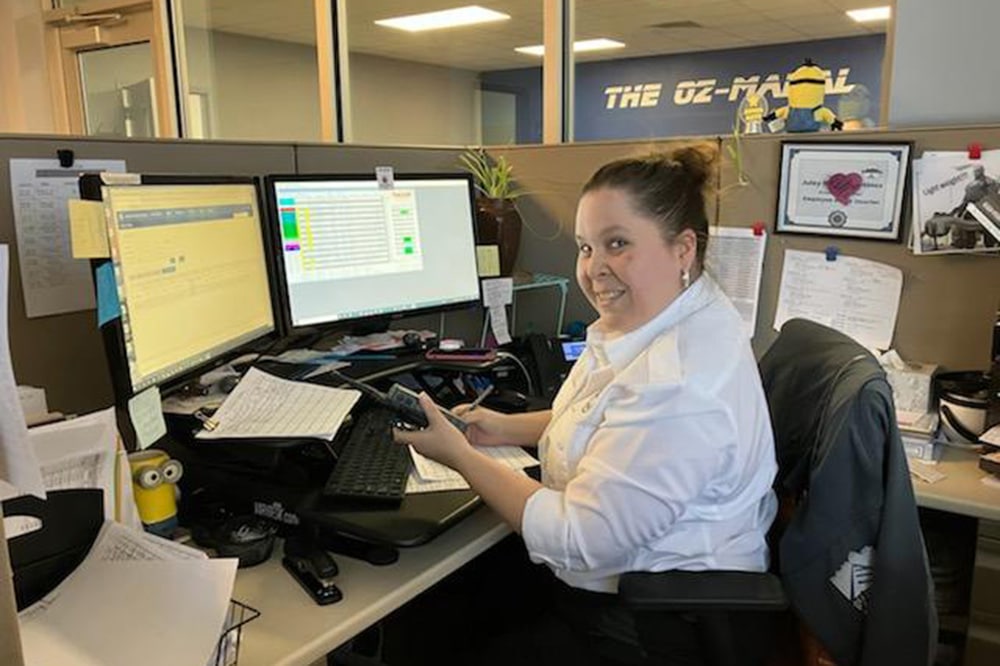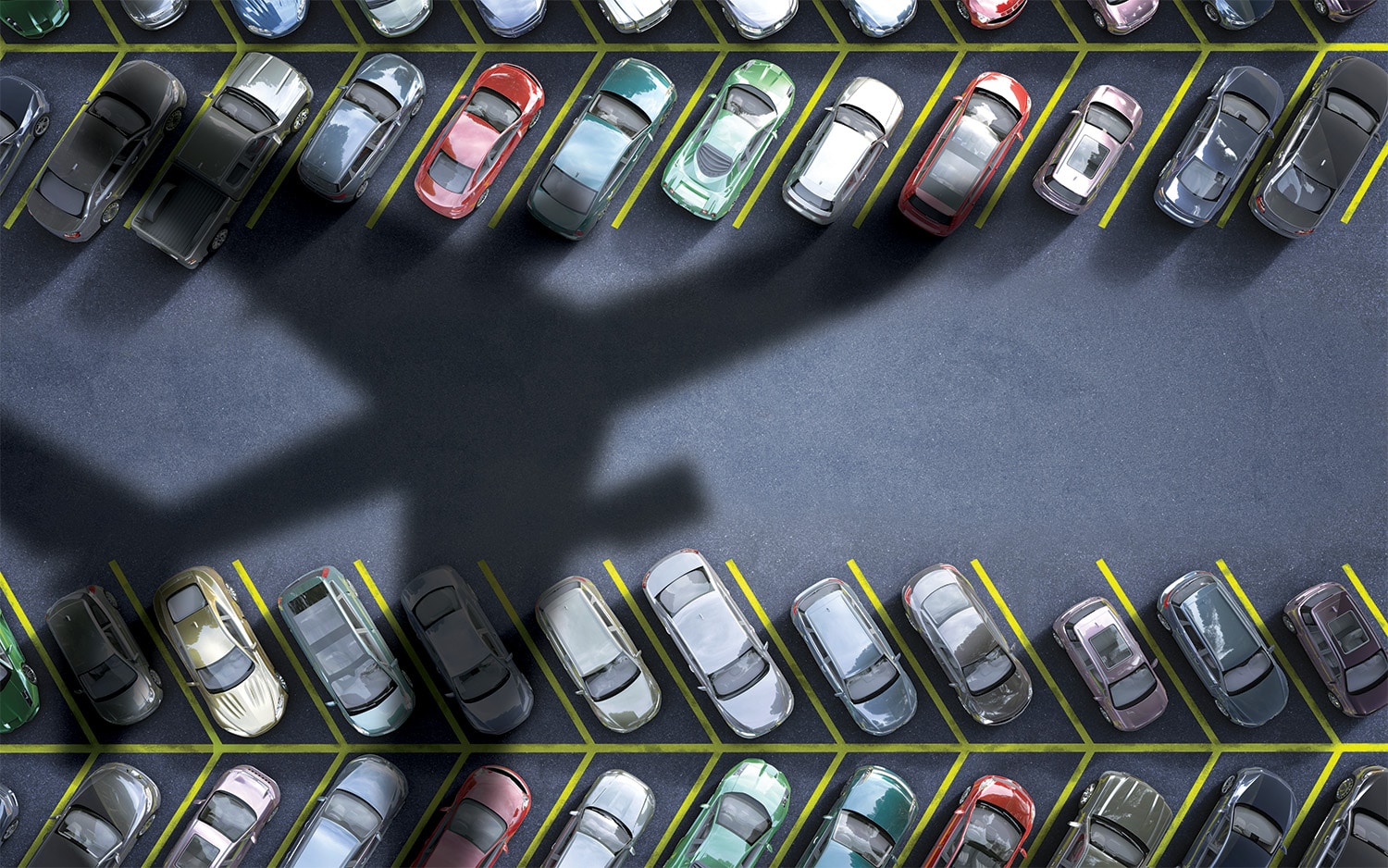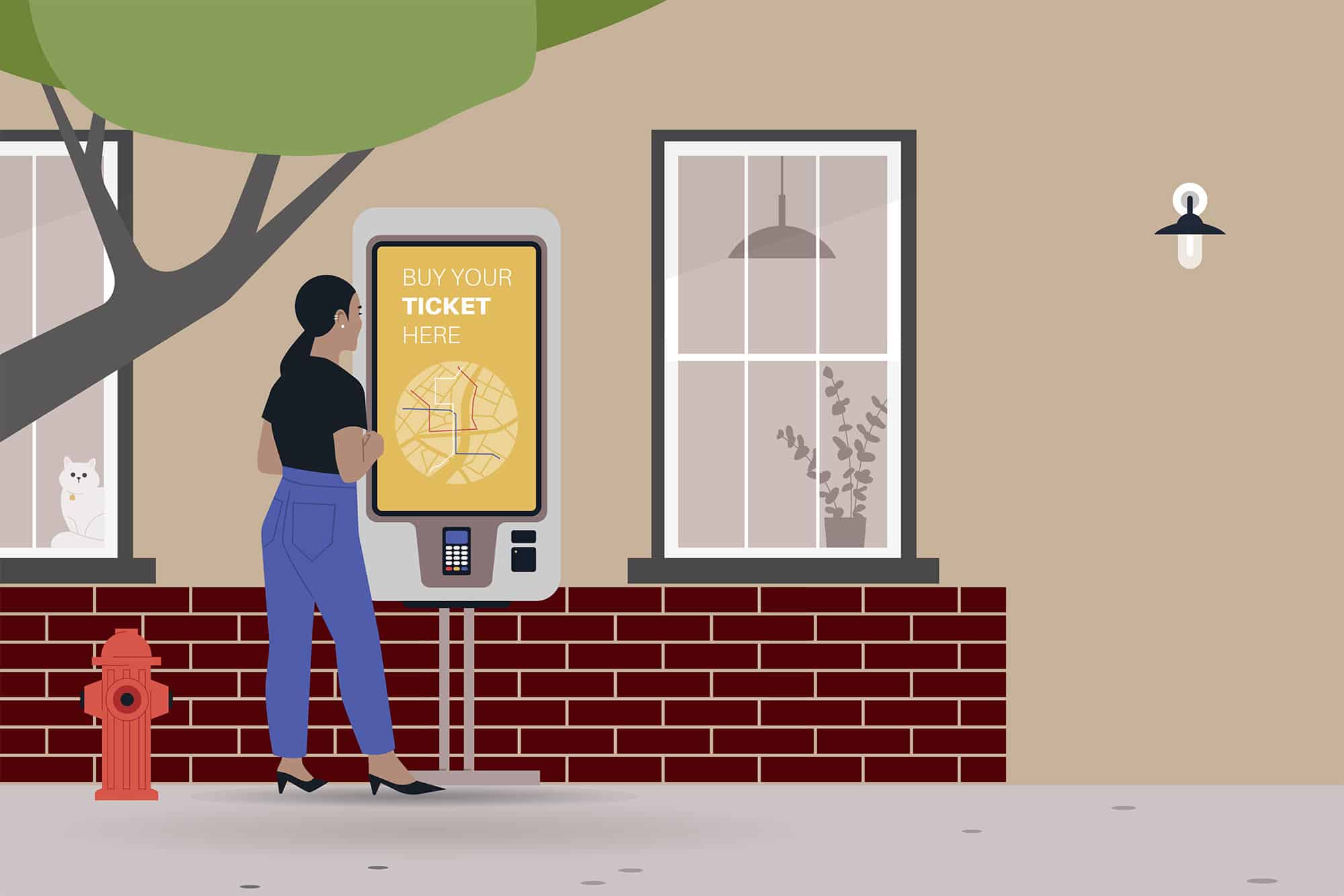
More…True Stories from the Quirky World of Parking
A Review of the Newest Book from Larry J. Cohen,
Share:
Share:
There is an age-old proverb attributed to the Greek philosopher Plato: Our need will be the real creator. This phrase has morphed over time into something you may be more familiar with: Necessity is the mother of invention. At the Allentown Parking Authority (APA), this proverb is at play daily. I’d like to share some encouraging thoughts with the hope of inspiring other organizations to reach beyond the norm.
The APA was established in 1985 via the passage of a local ordinance concurrent with the Pennsylvania Parking Authority Act. Over several decades, the APA maintained level growth. The staff consisted of the basic departments found in most municipal parking operations: on-street and off-street departments, along with customer service, finance, and administrative positions. Although the organization was operating, there was nothing extraordinary happening, and one could say that the APA was “lost” amongst the forest of other city entities and municipal operations.
In 2017, however, this was all about change. In October 2017, the APA welcomed a new Executive Director, John N. Morgan. Shortly after his arrival, John began invigorating APA’s operations. From updated policies to a new organization logo and new vehicles, the changes were rapid and welcomed. It was a fast and furious time of new uniforms, responsibilities, and changes—Oh my!
While an evolution to a more focused, customer-centric approach was happening inside the APA, a major change that would have a tremendous impact on the organization was happening outside it. For many years, the City of Allentown operated its own 911 Emergency Communication Center (Comm Center). The Center fielded emergency phone calls ranging from law enforcement and fire-related emergencies to health emergencies. Parking-related complaints were included among potential life and death communications. The Comm Center received parking enforcement requests and dispatched those calls to APA parking enforcement officers.
And then, everything changed.
The County leadership decided to funnel emergency calls through the County Dispatch Center and no longer handle the calls locally through the City of Allentown, and our local city-operated center would close. While this was difficult news to process, they say that when one door closes, another one opens. That was the case for the APA.
As the closure deadline for the Comm Center neared and the details were ironed out, the APA was made aware that the County Dispatch Center preferred not to handle the parking complaints. In a meeting on the topic, Executive Director Morgan was informed that this task would now fall to the APA. In a single meeting, a task of enormous magnitude was assigned to our organization. Remember the necessity is the mother of invention thing I mentioned earlier?
This new and lofty goal came as a shock to the APA team and, at first, was very overwhelming. For decades, the APA had operated on a traditional business schedule. There were just enough staff to operate Monday through Friday from 8:00 a.m. to 4:30 p.m. Suddenly, with essentially no warning, APA was looking at a transition to a fully functioning 24/7 operation.
In my 17 years of experience in the parking industry, I have learned that parking operations all share some common functions. For example, a parking deck generally tends to have the same components, whether it’s in a large city or a small one: gates, cameras, kiosks, or podiums. Some parking decks have elevators; some do not, but nearly all have stairs. So, a parking deck is a common element of most parking operations that nearly all operators can find commonality on. That said, transitioning from a traditional parking operation to a 24/7 one was NOT common. Despite looking everywhere, a manual on becoming 24/7 had not yet been written. The lack of availability of “how-to videos” would be a challenge as we embarked on this transition.
So, without a roadmap to guide us and determined to break new ground, the process began. We started by brainstorming on the immediate needs.
While not the only need, staff was certainly an obvious one, so I laid a framework on what positions would be needed and in what order. At the time, there was only one supervisor—ME! More supervisors would be needed. We would require dispatch staff along with a phone system and means of taking and tracking calls. As I began researching options for dispatch software, I only found options geared towards emergency call centers and focused on serving the needs of police, fire, and EMS situations. Those 911-type software solutions were also very expensive, making them well out of reach. Specific parking dispatch software was unavailable, so some outside-of-the-box thinking occurred.

The solution came to me in a conversation with our third-party towing company. A towing operation receives calls for assistance, much like my organization would receive calls for parking enforcement, and requires some way of taking those calls, dispatching a tow truck to the location, and then resolving the call in a software system. I found out what software the towing company used, and I then made a trip to Baltimore to attend the National Towing Industry trade show to speak to the software company directly. The software not only met our needs but could also be used with our current ticket management system. The incoming calls could be input into the system and would digitally forward to the enforcement officer in the field. This drastically reduced radio traffic from the dispatcher to the enforcement officer and provided a record of the call without having to write it down themselves. The software cost was only a small fraction of many other types on the market. One step down, and many more to go!
Our enforcement staff began to grow. I was promoted to Enforcement Manager, and I now have a growing staff of supervisors, dispatchers, and enforcement officers. We soon added a second shift and began taking enforcement requests well into the evenings. Naturally, our ticketing production increased with the addition of more enforcement officers and expanding our hours of coverage. The increased productivity also began to increase the number of scofflaw vehicles. This presented a problem: our boot inventory was not adequately supplied for the increase.
When the APA was operating on a Monday to Friday day shift, there wasn’t a great need to have a ready supply of parking boots available. Booting presented a challenge as it tied up the already limited staff to install and remove the devices. Our inventory included a standard wheel lock device and a windshield-applied device. Boots were carried in all our vehicles, spreading their locations across our fleet of 12 vehicles. With the switch to 24/7 operation, the need became greater, and the time had arrived for a designated booting vehicle. Gathering the supervisors and the Executive Director together, we began brainstorming how to address the botting challenge. Much like the 24/7 manual that didn’t exist, there didn’t seem to be any kind of parking boot rack available either. Where in the world do you go to buy a parking boot rack?
Once again, we return to the philosophy that necessity is the mother of invention. My brother-in-law, Korry, is a welder. I brought the boot rack idea up to him, and within a short time, he suggested a design for a rack that he could fabricate and install that would carry both styles of parking boots as well as offer in-vehicle charging for the windshield parking boots. The vehicle was delivered with two fully functional parking boot racks! Our enforcement officers fell in love with it. Gone are the days of a messy pile of parking boots strewn about the trunk or back seat of a vehicle. Now, the parking boots are kept organized in their place. Our enforcement officers have a booting vehicle that is completely outfitted with everything they would need to respond to boot calls and take appropriate action. Two enforcement officers in particular, Rasheed Black and Kareem Richardson (AKA Pippen and Jordan), have found the new vehicle and boot racks incredibly handy.
These are just some of the innovations and inventions the APA has implemented during its evolution. Transitioning to a 24-/7 operation started four years ago in 2019. I am happy to say that we have finally achieved that goal in February of 2023! While we are excited to celebrate the accomplishment, the intent in sharing our story is to encourage others to think beyond their current positions. There are many ways to accomplish goals and broaden your organization’s abilities. It may be difficult to find directions, especially if your path is not one that is frequently traveled. Many great people in this industry are willing to help if you ask. Should you find yourself answering a knock at the door and necessity is on the other side when you open it, then get to inventing! ◆
Jonathan Haney, CAPP, is Deputy Director for the Allentown Parking Authority.

A Review of the Newest Book from Larry J. Cohen,

Case Study: Bringing 24/7 Customer Service to Regina International Airport

Self-Service Kiosks and the Democratization of Digital Services
Parking & Mobility is IPMI’s flagship publication, covering the news, trends, analysis, technologies, and people of the parking and mobility industry, and how it affects and influences communities around the world.
| Cookie | Duration | Description |
|---|---|---|
| cookielawinfo-checkbox-advertisement | 1 year | Set by the GDPR Cookie Consent plugin, this cookie is used to record the user consent for the cookies in the "Advertisement" category . |
| cookielawinfo-checkbox-analytics | 11 months | This cookie is set by GDPR Cookie Consent plugin. The cookie is used to store the user consent for the cookies in the category "Analytics". |
| cookielawinfo-checkbox-functional | 11 months | The cookie is set by GDPR cookie consent to record the user consent for the cookies in the category "Functional". |
| cookielawinfo-checkbox-necessary | 11 months | This cookie is set by GDPR Cookie Consent plugin. The cookies is used to store the user consent for the cookies in the category "Necessary". |
| cookielawinfo-checkbox-others | 11 months | This cookie is set by GDPR Cookie Consent plugin. The cookie is used to store the user consent for the cookies in the category "Other. |
| cookielawinfo-checkbox-performance | 11 months | This cookie is set by GDPR Cookie Consent plugin. The cookie is used to store the user consent for the cookies in the category "Performance". |
| CookieLawInfoConsent | 1 year | Records the default button state of the corresponding category & the status of CCPA. It works only in coordination with the primary cookie. |
| elementor | never | This cookie is used by the website's WordPress theme. It allows the website owner to implement or change the website's content in real-time. |
| viewed_cookie_policy | 11 months | The cookie is set by the GDPR Cookie Consent plugin and is used to store whether or not user has consented to the use of cookies. It does not store any personal data. |
| Cookie | Duration | Description |
|---|---|---|
| _ga | 2 years | The _ga cookie, installed by Google Analytics, calculates visitor, session and campaign data and also keeps track of site usage for the site's analytics report. The cookie stores information anonymously and assigns a randomly generated number to recognize unique visitors. |
| _ga_02PMHW8YWC | 2 years | This cookie is installed by Google Analytics. |
| _ga_LC0QJJHM3J | 2 years | This cookie is installed by Google Analytics. |
| _ga_V9KYTSBYT2 | 2 years | This cookie is installed by Google Analytics. |
| iutk | 5 months 27 days | This cookie is used by Issuu analytic system to gather information regarding visitor activity on Issuu products. |
| Cookie | Duration | Description |
|---|---|---|
| mc | 1 year 1 month | Quantserve sets the mc cookie to anonymously track user behaviour on the website. |
| Cookie | Duration | Description |
|---|---|---|
| ultp_view_1052 | 1 day | No description |
| ultp_view_1058 | 1 day | No description |
| ultp_view_1060 | 1 day | No description |
| ultp_view_1064 | 1 day | No description |
| ultp_view_1068 | 1 day | No description |
| ultp_view_1070 | 1 day | No description |
| ultp_view_1072 | 1 day | No description |
| ultp_view_1078 | 1 day | No description |
| ultp_view_1082 | 1 day | No description |
| ultp_view_1088 | 1 day | No description |
| ultp_view_1100 | 1 day | No description |
| ultp_view_1103 | 1 day | No description |
| ultp_view_1114 | 1 day | No description |
| ultp_view_1118 | 1 day | No description |
| ultp_view_1122 | 1 day | No description |
| ultp_view_1125 | 1 day | No description |
| ultp_view_1130 | 1 day | No description |
| ultp_view_1132 | 1 day | No description |
| ultp_view_1135 | 1 day | No description |
| ultp_view_1541 | 1 day | No description |
| ultp_view_1554 | 1 day | No description |
| ultp_view_1557 | 1 day | No description |
| ultp_view_1560 | 1 day | No description |
| ultp_view_1563 | 1 day | No description |
| ultp_view_1568 | 1 day | No description |
| ultp_view_1572 | 1 day | No description |
| ultp_view_1576 | 1 day | No description |
| ultp_view_1580 | 1 day | No description |
| ultp_view_2305 | 1 day | No description |
| ultp_view_2321 | 1 day | No description |
| ultp_view_2338 | 1 day | No description |
| ultp_view_2342 | 1 day | No description |
| ultp_view_259 | 1 day | No description |
| ultp_view_270 | 1 day | No description |
| ultp_view_275 | 1 day | No description |
| ultp_view_286 | 1 day | No description |
| ultp_view_3074 | 1 day | No description |
| ultp_view_3115 | 1 day | No description |
| ultp_view_3334 | 1 day | No description |
| ultp_view_3336 | 1 day | No description |
| ultp_view_3338 | 1 day | No description |
| ultp_view_3340 | 1 day | No description |
| ultp_view_3346 | 1 day | No description |
| ultp_view_3354 | 1 day | No description |
| ultp_view_3361 | 1 day | No description |
| ultp_view_3367 | 1 day | No description |
| ultp_view_365 | 1 day | No description |
| ultp_view_367 | 1 day | No description |
| ultp_view_38 | 1 day | No description |
| ultp_view_3846 | 1 day | No description |